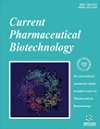-
oa Editorial [Hot Topic: Nitric Oxide and Hydrogen Sulfide - Contribution of Gaseous Messengers to the Cardiovascular Control (Guest Editor: Sona Cacanyiova)]
- Source: Current Pharmaceutical Biotechnology, Volume 12, Issue 9, Sep 2011, p. 1292 - 1293
-
- 01 Sep 2011
- Previous Article
- Table of Contents
- Next Article
Abstract
This special issue of Current Pharmaceutical Biotechnology is focused on the role of gaseous transmitters which have turned end for traditional concept of intercellular signalization. Unlike classical messengers, gaseous transmitters are not readily stored in vesicular structures, are re-synthesized as needed and affect cellular metabolism in a more immediate fashion. Two of them - nitric oxide (NO) and hydrogen sulfide (H2S) - have been proved as signaling molecules playing a unique role in the cardiovascular control. The discovery of important vasoactive role of NO originated from the research of Furchgott and colleagues who recognized that gentle rubbing off the intimal arterial surface eliminated the relaxant response to acetylcholine. The diffusible substance released from endothelium which was responsible for vasorelaxation of smooth muscle cells was called “endothelium-derived relaxing factor” and later it was identified that it is NO. NO has become one of the most researched molecules and in 1992 it was voted "Molecule of the Year". During years the research has uncovered basic physiological pathways and regulatory mechanisms which are behind the NO effects. NO is synthesized in the process of metabolism of L-arginine to L-citruline by enzyme NO-synthase (NOS). Three isoforms of NOS were discovered in the cardiovascular system: endothelial (eNOS), neuronal (nNOS), and inducible (iNOS), and it has been suggested that each of them has the potential to regulate vascular tone and to alter blood pressure. New findings reviewed in the articles included into this special issue enrich the knowledge about NO and refresh the current concept of NO effects. The original theory of vasorelaxation mediated by NO released from endothelial cells has been step by step confronted by the growing evidences that vascular smooth muscle cells themselves are able to produce NO as it is reported in the review of Cacanyiova. Several studies revealed that different pathological interventions in endothelial function - such as oxidative stress or hypertension - were associated with NO generation in vascular media as physiologically relevant compensation of endothelial NO deficiency. Further, the review of Kristek demonstrates that nNOS inhibition induces completely different process compared to eNOS inhibition - the last was confirmed by hypertension, arterial and heart hypertrophy accompanied by changes in vasoactivity. The specificity of endothelial or neuronal NO function seems to be related to particular circulatory area and very probably is determined by mutual interactions with other regulatory systems (sympathoadrenergic, renin-angiotensin etc.). Research paper of Dashwood and colleagues suggests that reduced neuronal as well as endothelium-derived NO may play a role in developing erectile dysfunction. The importance of the study is that the human material is used. Authors showed nerve degeneration - nitrergic neuropathy - accompanied by decreased expression of nNOS in penile tissue of patients with erectile dysfunction so confirming the specific position of NO system in a modified vascular tissue - corpus cavernosum. Accumulating evidences emphasize the importance of the central nervous system and dysfunction in neurotransmission in the brain in the development of cardiovascular diseases. It has been shown repeatedly that there is close relationship between alterations in NO neurotransmission and central regulation of cardiovascular system. The review of Ufnal and Sikora is focused on gaseous transmitters in the brain. The brain NO system is affected by several currently used cardiovascular drugs and accordingly it has been suggested that central action of NO may contribute to their therapeutics effects. Pharmacological manipulation of the gaseous transmitters systems, such as NO, in the brain affects the sympathetic system activity, release and/ or action of the most essentials hormones involved in the regulation of the circulatory system and may present a possible novel therapeutic target in the future. The specific role of endothelial NO in the regulation of cerebral blood flow and vascular tone is discussed in the review of Atochin and Huang. The authors demonstrate that pharmacological and genetic manipulations of the endothelial NO system essentially affect the maintenance of vascular tone and cerebral perfusion under normal and pathological conditions such as ischemia and hyperoxia.....


